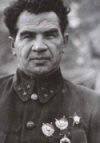JohnO
Posts: 268
Joined: 6/8/2005
From: Colorado Springs, CO
Status: offline

|
Here is a generic copy of a 5 paragraph OPORD. Most of the OPORD can be left out if you so wish. I will post later today of my OPORD briefing for one of my scenarios.
OPORD 000-00
References : Indicate any doctrinal manuals used in preparation of the OPORD.
Time Zone Used Throughout The Order: The time zone used throughout the
order (including annexes and appendixes) is the time zone applicable to
the operation. Operations across several time zones use ZULU time.
Task Organization: Describe the allocation of forces to support the
commander's concept. Task organization may be shown in one of two
places: preceding paragraph one, or in an annex, if the task
organization is long and complicated.
Weather and Light Data and General Forecast:
High Moonrise Sunrise
Low Moonset Sunset
Wind Speed Moonphase BMNT
Wind Direction % Illumination EENT
Terrain: OCOKA
NOTE: Describe the effects on enemy and friendly forces.
1. SITUATION – provide information essential to the subordinate leader’s understanding of the situation.
a. Enemy Forces. Refer to the overlay or sketch. Include pertinent intelligence provided by higher headquarters and other facts and assumptions about the enemy. This analysis is stated as conclusions and addressed:
(1) Disposition, composition and strength.
(2) Capabilities. A listing of what the enemy is able to do and how well.
(3) Most probable course of action.
b. Friendly Forces. Provide information that subordinates need to accomplish their tasks.
(1) Higher unit. A verbatim statement of the higher unit commander’s mission statement from paragraph 2 and concept of the operation statement from paragraph 3a.
(2) Left unit’s mission.
(3) Right unit’s mission.
(4) Forward unit’s mission.
(5) Mission of the unit in reserve or following.
(6) Units in support or reinforcing the higher unit.
c. Attachments and Detachments. When not shown under Task Organization, list here or in an annex, units attached and detached from the organization, together with the effective times.
2. MISSION
Provide a clear, concise statement of the task to be accomplished and the purpose for doing it (who, what, when, where, and why). The leader derives the mission from his mission analysis.
3. EXECUTION
Commander’s Intent. Give the stated vision that defines the purpose of the operation and the relationship among the force, the enemy, and the terrain.
a. Concept of the Operation. Refer to the operation overlay and concept sketch. Explain, in general terms, how the unit, as a whole, will accomplish the mission. Identify the most important task for the unit (mission-essential task) and any other essential tasks. If applicable, designate the decisive point, form of maneuver of defensive techniques, and any other significant factors or principles. Limit this paragraph to six sentences.
(1) Maneuver. This may be a series of subparagraphs, designating phases of the operation. Address all elements and attachments by name, giving each of them an essential task. Designate the main effort; that is, who will accomplish the most important task. All other tasks must relate to the main effort. Give mission statements for each subordinate element.
b. Tasks to Subordinate Elements. Specify tasks, other than those listed in paragraph 3a(1), and the purpose of each, for squads and attachments. List each in separate numbered subparagraphs. State any priority or sequence.
c. Coordinating Instructions. List the details of coordination and control applicable to two or more units in the platoon. Items that may be addressed include:
Priority intelligence requirements and reporting tasks.
Uniform and MOPP level.
Troop safety and operational exposure guidance.
Engagement and disengagement criteria and instructions.
Consolidation and reorganization instructions.
Reporting requirements.
Terrorism and counterterrorism instructions.
Specified tasks that pertain to more than one squad or element.
Order of march and other movement instructions.
Timeline
4. SERVICE SUPPORT. Include CSS instructions and arrangements supporting the operation that are primary interest to the unit. Include changes to established SOPs or a previously issued order. Paragraph 4 is often prepared and issued by the PSG.
a. General. Reference the SOPs that govern the sustainment operations of the unit. Provide current and proposed company trains locations, casualty and damaged equipment collection points, and routes to and from them.
b. Materials and Services.
(1) Supply. Include information on all classes of supply of interest to the platoon. When applicable, list constraints and limitations, specific operating hours, distribution methods or schedules and other information which alters the standard manner in which supplies are managed, controlled, handled, or distributed.
Class I: Rations and gratuitous issue of health, morale, and welfare items.
Class II: Clothing, individual equipment, tentage, toolsets, and administrative and housekeeping supplies and equipment.
Class III: Petroleum, oils, and lubricants
Class IV: Construction materials.
Class V: Ammunition.
Class VI: Personal demand items.
Class VII: Major end items, including tanks, helicopters, and radios.
Class VIII: Medical.
Class IX: Repair parts and components for equipment maintenance.
Class X: Nonstandard items to support nonmilitary programs such as agriculture and economic development.
(2) Transportation. Include information on all methods of transportation to be used throughout the operation.
(3) Services. Include information or instructions that prescribe the type of service available, designation, and location of the facility and schedule for service.
(4) Maintenance. Include any information that differs from the established SOP on maintenance of weapons and equipment.
(5) Medical Evacuation. Identify procedures for evacuation of wounded if they differ from the SOP.
5. COMMAND AND SIGNAL
a. Command.
(1) Location of the higher unit commander and the CP.
(2) Location of the unit commander and the CP.
(3) Location of the alternate CP.
(4) Succession of command.
b. Signal.
(1) SOI index in effect.
(2) Listening silence, if applicable.
(3) Methods of communication in priority.
(4) Emergency signals, visual signals.
(5) Code words.
< Message edited by JohnO -- 2/20/2014 5:49:20 PM >
_____________________________
Go tell the Spartans, stranger passing by, that here, obedient to their laws, we lie.
|
 Printable Version
Printable Version










 )
) 

 (stepping down from my soapbox)
(stepping down from my soapbox) 
 New Messages
New Messages No New Messages
No New Messages Hot Topic w/ New Messages
Hot Topic w/ New Messages Hot Topic w/o New Messages
Hot Topic w/o New Messages Locked w/ New Messages
Locked w/ New Messages Locked w/o New Messages
Locked w/o New Messages Post New Thread
Post New Thread